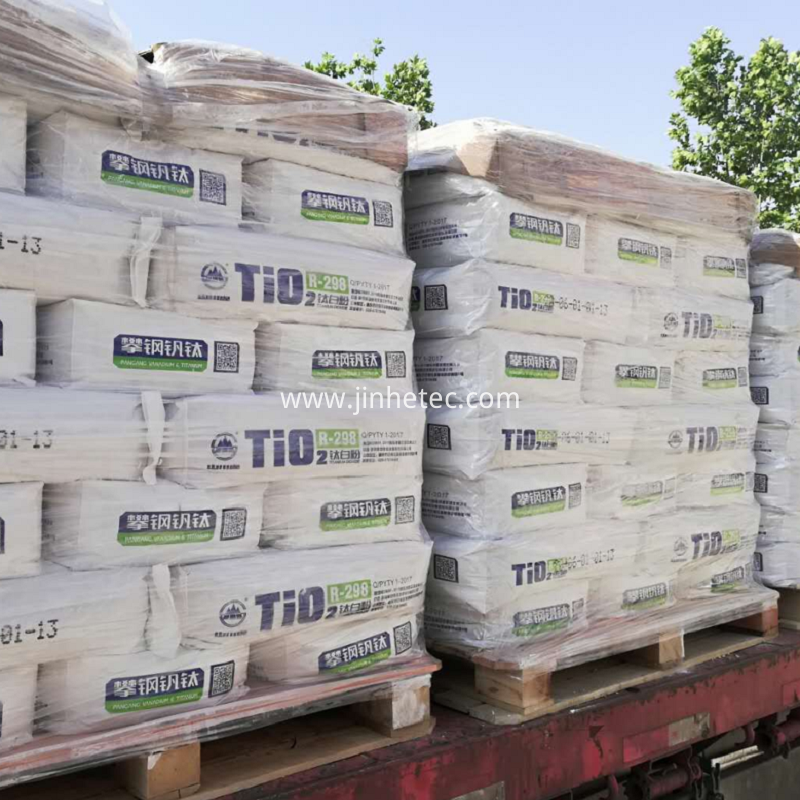
Privacy statement: Your privacy is very important to Us. Our company promises not to disclose your personal information to any external company with out your explicit permission.

Titanium Dioxide is the secondary film-forming material of the coating. It can not only make the surface of the coated object bright and white, but also enhance the weather resistance, powdering resistance and rheology of the coating. The dispersion of titanium dioxide is very important in coatings. Its quality will directly affect the production technology, production equipment and product quality of coatings. Understanding the dispersion factors of titanium dioxide in coatings can not only improve the quality of coatings, but also reduce pollution emissions and better implement the requirements of national clean industry.
1. Factors affecting dispersion
In solvent based coatings, when the Resin and solvent oil are determined, the application performance and performance characteristics of titanium dioxide determine its dispersion and dispersion stability.
Firstly, the average particle size and particle size distribution affect the properties of Titanium Dioxide Pigment. When the mass percentage of titanium dioxide with particle size less than 200 nm is about 30%, the zeta potential is about - 70 MV; If the mass percentage is less than 20%, the zeta potential is about - 40mv. It can be seen that the particle size of titanium dioxide seriously affects its surface electrical properties, thus affecting the surface adsorption performance. It should be noted that the particle size should not be too small, otherwise it will affect other properties of titanium dioxide. It is best to control the particle size at (0115 ~ 013) LM.
Secondly, the content of soluble substances affects the application performance of titanium dioxide. In the mixed coating dispersion system, inorganic ions with strong polarity will not only offset the charge on the surface of titanium dioxide, but also can not form a strong electric double layer, which weakens the adsorption on the surface of titanium dioxide and makes the resin unable to be firmly adsorbed on the surface of titanium dioxide particles, thus reducing the dispersion stability of titanium dioxide and leading to its coarsening in solvent based coatings.
Thirdly, the oil absorption affects the dispersion or dispersion stability of titanium dioxide. After the titanium dioxide with high oil absorption is grinded and dispersed, part of the solvent oil will be absorbed by the titanium dioxide, resulting in insufficient oil for dissolving the resin, reducing the degree of resin solvation, weakening the adsorption of titanium dioxide, and reducing its dispersion and dispersion stability.
2. Ways to improve dispersion
First, strictly control the particle size and particle size distribution.
The influencing factors of titanium dioxide particle size and particle size distribution are complex, so it is difficult to master them completely. Therefore, the hydrolysis process and technology can be improved first to ensure the uniformity of the original particles. Secondly, the control of key temperature points of calcination can be strengthened to make titanium dioxide particles grow evenly. Finally, the powder of the product can be purified, and the air mill with high efficiency and good classification effect can be selected to replace the Raymond system to stabilize the surface characteristics of titanium dioxide.
Second, strictly control oil absorption and water-soluble substances.
The oil absorption of titanium dioxide is mainly related to the calcination atmosphere or calcination high temperature point temperature in the calcination process. If it is not properly controlled, it will cause lattice defects and irregular particle shape of titanium dioxide particles. Therefore, it is necessary to control the appropriate calcination temperature, adjust the reasonable matching of feed rate and kiln speed, and reduce the lattice defects and regular geometric shape of particles.
Third, strictly carry out surface treatment.
At present, most domestic manufacturers produce anatase titanium dioxide, which has poor dispersion in coatings. Under the background of the national promotion of clean industry, its application in the coating industry is gradually replaced by rutile titanium dioxide. For coating enterprises that still use anatase titanium dioxide, their surface characteristics can be changed through surface treatment, such as selecting silicone, coupling nitrogen reagent or some polyphosphate.
Dispersion is an important index that titanium dioxide manufacturers are most concerned about. If the dispersion is not good, not only the efficacy of titanium dioxide will be greatly reduced, but also the pollution will be intensified.
June 25, 2023
April 03, 2023
With the development of modern ceramic technology, people have put forward higher requirements for the performance of ceramics. Sodium tripolyphosphate is an additive commonly used in architectural...
Iron oxide pigment mars yellow Iron Yellow 313: Iron Oxide Yellow Powder, scientific name: Fe2O3 Crystal, molecular formula: Fe2O3H2O It is a chemically stable alkaline oxide that reacts with acid to...
What is fumed silica Fumed silica is silicon dioxide produced by the vapor phase method, commonly known as fumed silica. It is amorphous nano-sized particles with surface hydroxyl and adsorbed water...
Abstract: This article introduces the development of environmentally friendly powder coatings and the application of iron oxide pigments in powder coatings. With the higher requirements for pigment...
Email to this supplier
June 25, 2023
April 03, 2023

Privacy statement: Your privacy is very important to Us. Our company promises not to disclose your personal information to any external company with out your explicit permission.

Fill in more information so that we can get in touch with you faster
Privacy statement: Your privacy is very important to Us. Our company promises not to disclose your personal information to any external company with out your explicit permission.